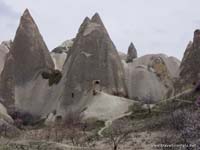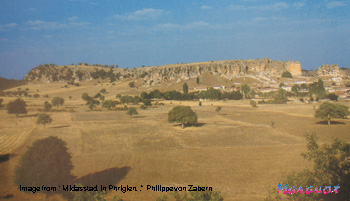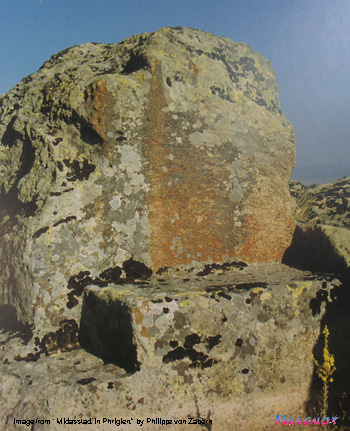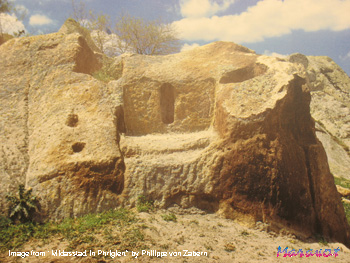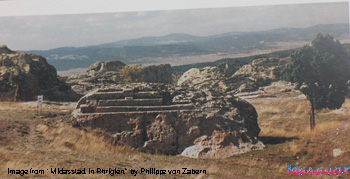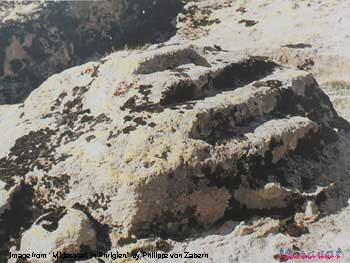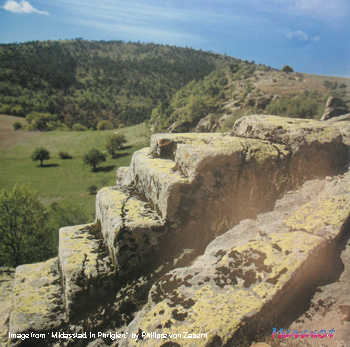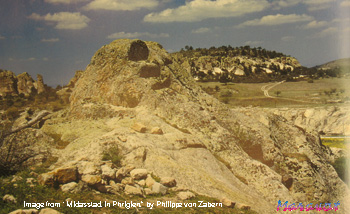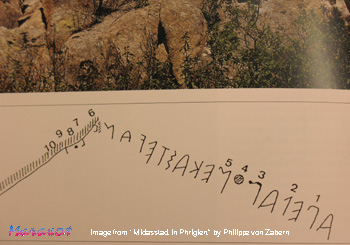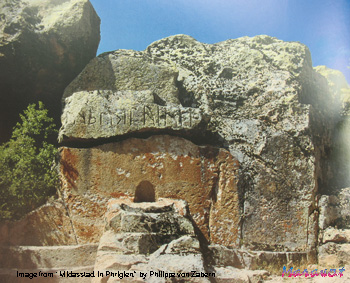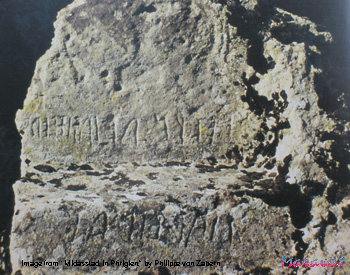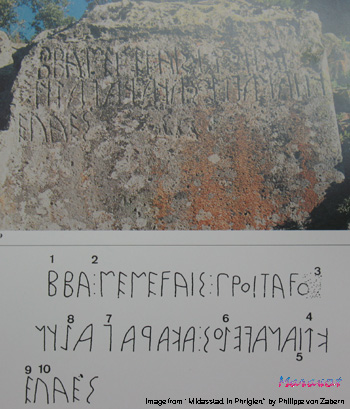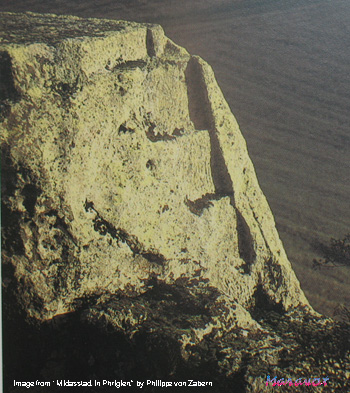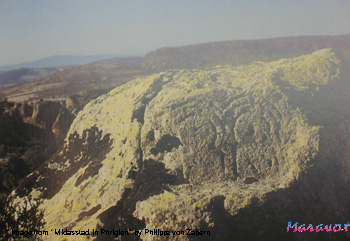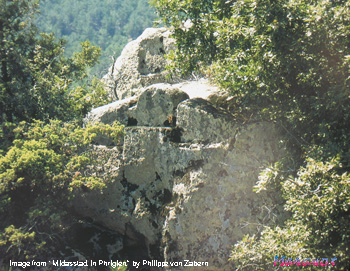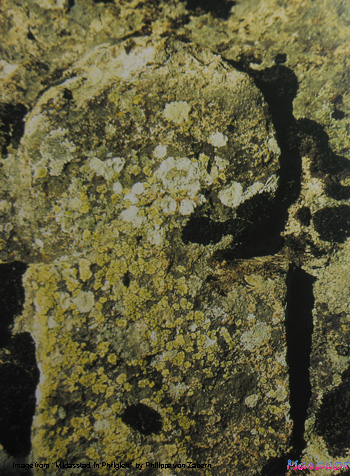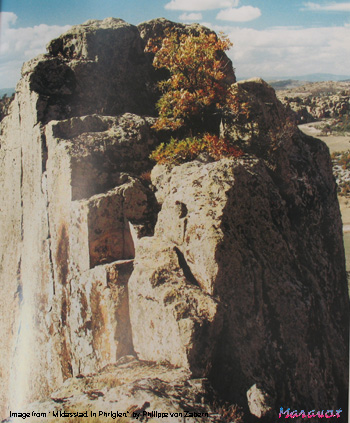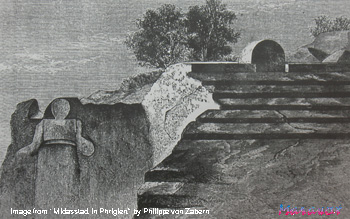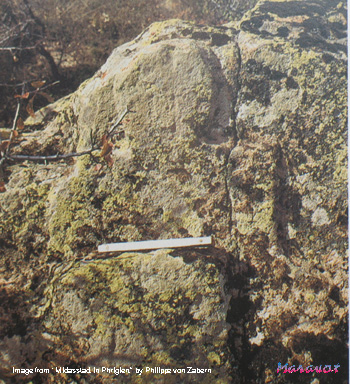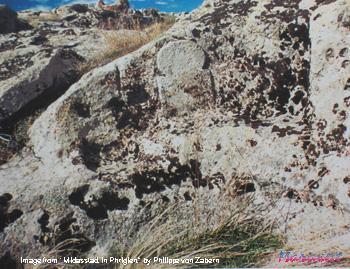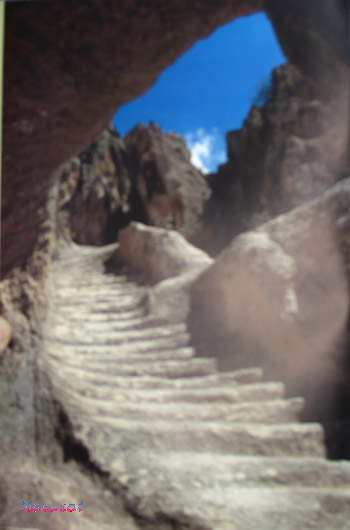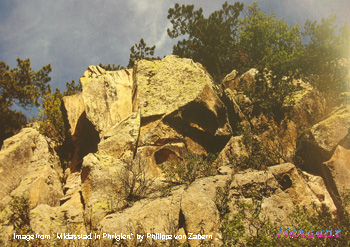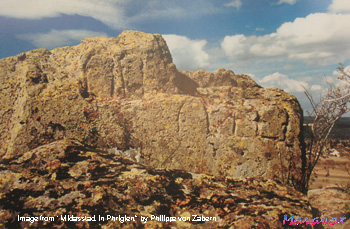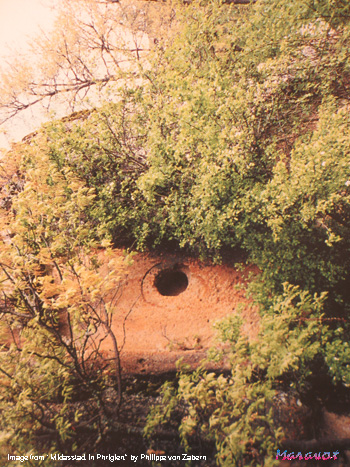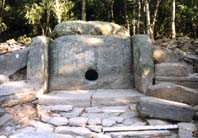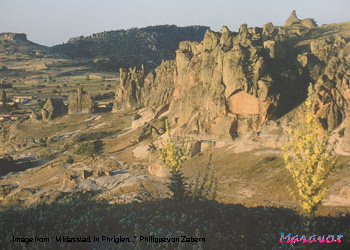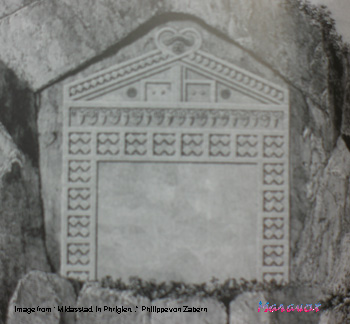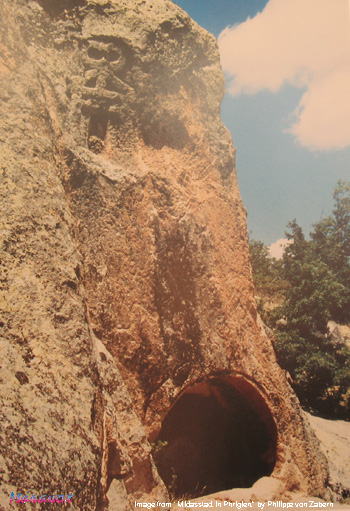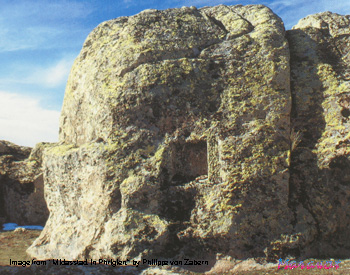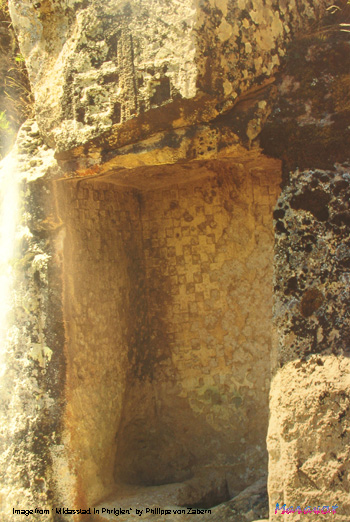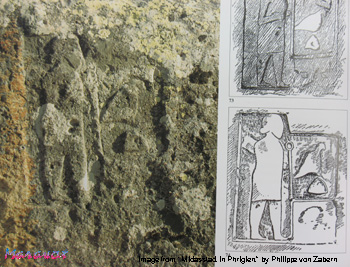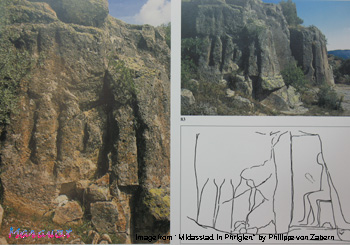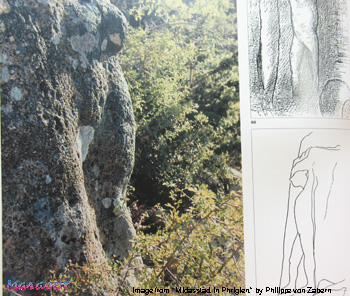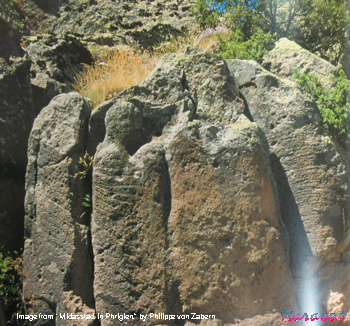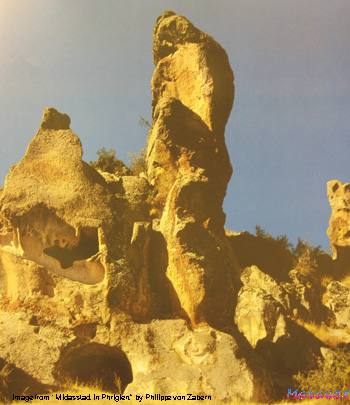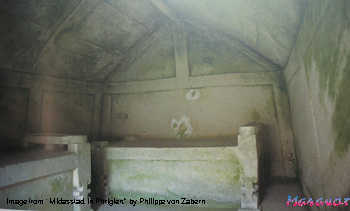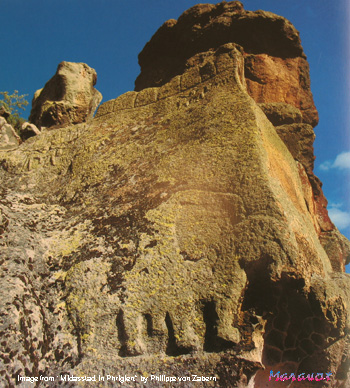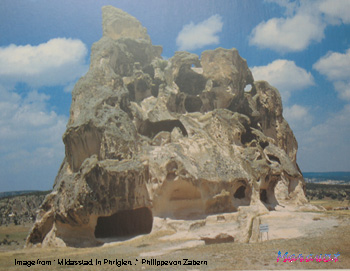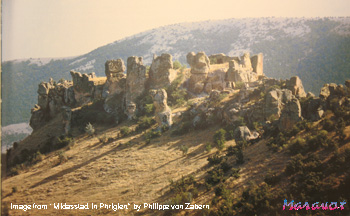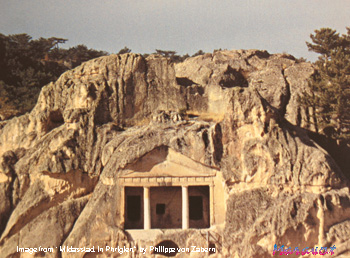Â
The Phrygian language
Translation of Phrygian scripts (continued), Phrigian1a.html
by Mel Copeland
(Based on a related work, Etruscan Phrases,
first published in 1981)
The Kaya called Midas City
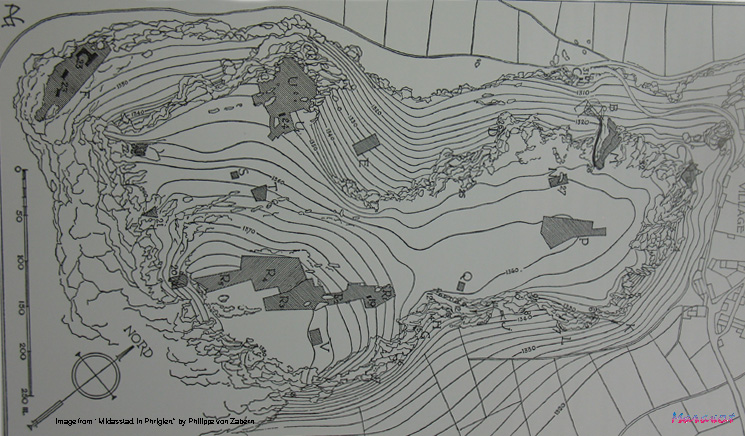
Phrygien inscriptions from "Midasstadt in Phrigien," Philippe von Zabern, Mainz, 2002. As one enters the main staircase to this mysterious plateau, one must go through a hole, a natural arch in the mountain, perhaps in reference to natural birth, passing through the birth canal. At the top of the stairs is a high altar with two idols which looks like a throne. From there the worshippers would circuit the mountain to visit hundreds of altars, idols and monument facades. The idols resemble the Tanit idol of the Carthaginians. The sanctuary is so big it is a wonder that it is not clearly identified in ancient texts. Of interest is the fact that the buildings on top of the monument appear to comprise facilities for the priests and priestesses - with three large houses, as far as we can tell from the photo - that certainly don't look like they could house more than a hundred people. Also, the plain below the mount does not look like it has the remains of a tel (mount caused by continuous habitation) on it. The place on the surface does not look like it has hosted a large population - one that would justify the number of altars, idols and facades on the mount called Midas City. It is indeed a very mysterious place.
| Some of the unusual hills that are used as homes in Goreme, Turkey |
When King Croesus sought advice from the world's greatest oracles: to two sanctuaries in Greece and one in Lybia. There was a great sanctuary, a holy mountain in Lydia of which he did not inquire - it was probably the same mountain that plunges to the sea that was honored by the Hittite King Mursulis.
In spite of the conquerors that went across the Phrygian and Lydian plains the plateau continued to be used as a holy place. Hellenistic tombs and then Byzantine chuches were erected in the area. Midas City has some affinity to the area around Goreme, in Cappadocia, where cities, castles, churches and monestaries were carved out of the land. Goreme is special in this aspect, since even the homes in the community were carved out of formations that look like upsidedown icecream cones.
|
The Kala, its Altars and Idols
|
Facades
|
|||||||||||||||||||||||||||||||||||||||||||||||||||||||||||||||||||||||||||||||||||||
![]()
![]()
Notes:
1) Copies of the images from Zabern shown here are, by necessity, smaller file sizes. Larger, more detailed images are shown in their work. We have used the larger files to read / verify their transcriptions. Some inscriptions are so deteriorated, as can be discerned from the photos, that to identify the characters one would need to see the inscriptions in person.
2) Image from "Midaastadt in Phrigien." Entry to the Midas City mount is through this gate. Note that the gate is through what appears to be a natural hole in the rock. Because of the theme of the labyrinth design displayed on the mount it appears that entry through this portal implies entry into the womb of the mount. Entering the womb is a replay of being reborn, and this is what the faith behind Cybele and her consort Attis represents, since Attis, born from Cybele's seed, was said to have been reborn, like Dionysus.
![]()
email
![]() Etruscan Glossary with Phrygian words:
Etruscan Glossary with Phrygian words:
![]() Send me to Lydian.html
Send me to Lydian.html
![]() Click here for a spreadsheet of the words, Lydian Glossary.xls or Lydian_Glossary.html
Click here for a spreadsheet of the words, Lydian Glossary.xls or Lydian_Glossary.html
Launched 4.28.07
Updated: 4.29.07; 5.18.07; 6.02.07
Copyright © 2007 Maravot. All rights reserved.
Copyright © 2007 Mel Copeland. All rights reserved.
Use of the information on this page for publication in any media is forbidden without the prior written consent of the author.

